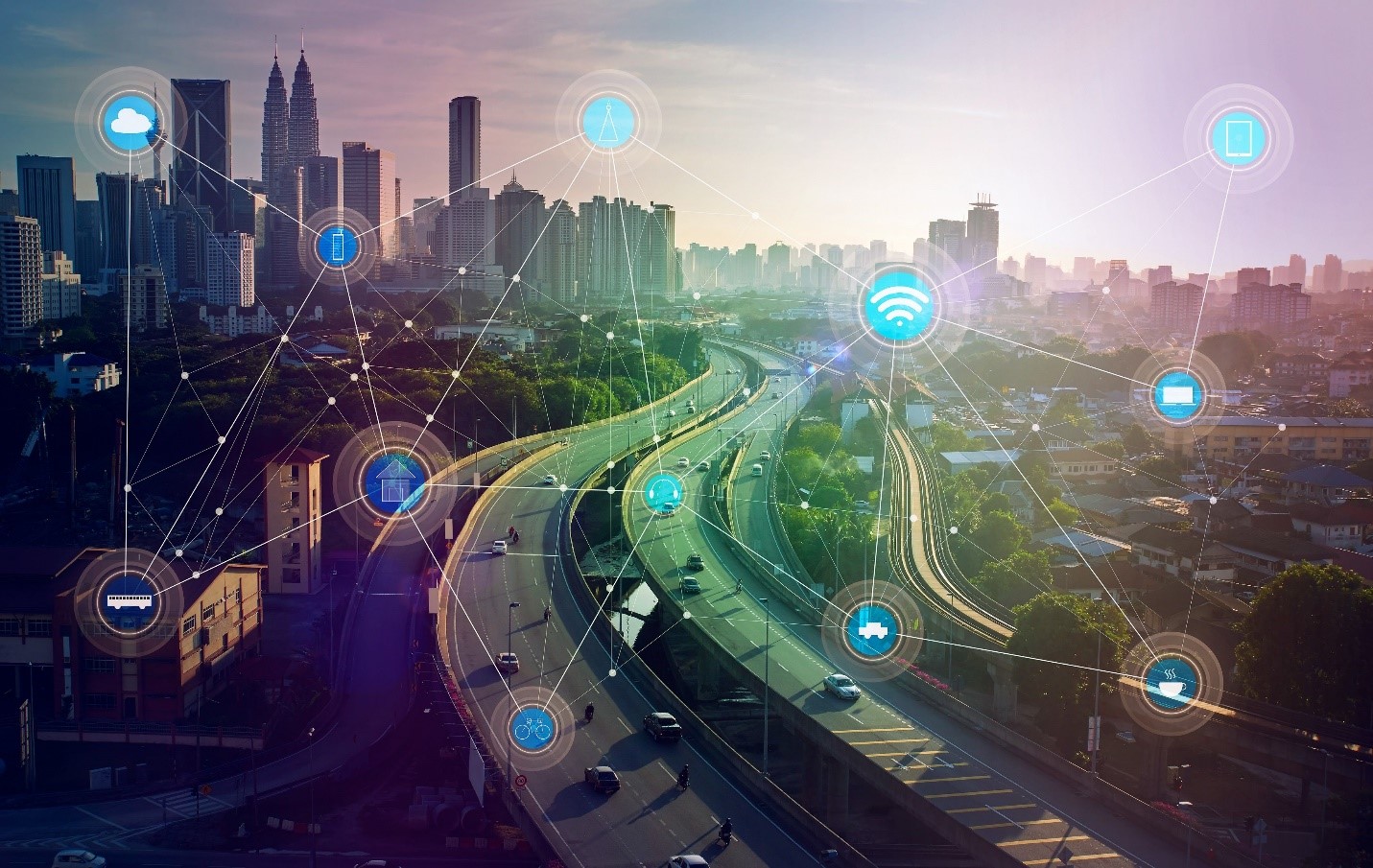
In recent years, the concept of smart cities has moved from the realm of science fiction to tangible reality. As urban areas around the globe grapple with increasing populations and the corresponding strain on infrastructure, smart cities offer a beacon of hope. By leveraging cutting-edge technologies such as the Internet of Things (IoT), artificial intelligence (AI), and big data analytics, these urban areas aim to enhance the quality of life for their residents. However, the path to realizing fully functional smart cities is fraught with challenges that need to be addressed. This article explores the innovations driving the rise of smart cities and the obstacles they must overcome.
Innovations Driving Smart Cities
1. Internet of Things (IoT)
The Internet of Things (IoT) is the backbone of smart cities. IoT involves a network of interconnected devices that communicate and share data with each other. In a smart city, IoT can be used to monitor and manage a wide range of urban functions, from traffic flow and energy consumption to waste management and public safety. For instance, smart sensors can detect traffic congestion in real-time, allowing for dynamic adjustments to traffic light patterns to alleviate bottlenecks.
2. Artificial Intelligence (AI)
Artificial Intelligence (AI) is another cornerstone of smart city development. AI algorithms can analyze vast amounts of data to provide actionable insights. For example, predictive analytics can forecast energy consumption patterns, enabling more efficient energy distribution. AI can also be used in public safety, where machine learning algorithms analyze surveillance footage to identify potential security threats in real-time.
3. Big Data Analytics
Big data analytics is crucial for making sense of the enormous volumes of data generated by IoT devices. By analyzing this data, city planners can gain insights into various aspects of urban life, from traffic patterns to air quality. These insights can then be used to make data-driven decisions that improve the efficiency and sustainability of city operations.
4. Renewable Energy Solutions
Sustainability is a key focus for smart cities, and renewable energy solutions play a significant role in this regard. Solar panels, wind turbines, and other renewable energy sources can be integrated into the urban infrastructure to reduce reliance on fossil fuels. Smart grids, which use digital technology to manage the distribution of electricity, can further enhance energy efficiency.
5. Smart Transportation
Transportation is a critical component of any urban area, and smart cities are revolutionizing how people move around. Autonomous vehicles, smart traffic management systems, and integrated public transportation networks are just a few examples of innovations in this field. These technologies aim to reduce traffic congestion, lower emissions, and improve the overall efficiency of urban transportation systems.

Challenges in Developing Smart Cities
1. Data Privacy and Security
One of the most significant challenges facing smart cities is ensuring data privacy and security. The vast amounts of data collected by IoT devices can be a target for cyberattacks. Ensuring that this data is securely stored and transmitted is crucial to maintaining public trust. Moreover, there are ethical considerations regarding the extent to which personal data should be collected and used.
2. High Costs
The development and implementation of smart city technologies require substantial financial investment. From installing IoT sensors to developing AI algorithms, the costs can be prohibitive for many cities, particularly in developing countries. Securing funding and demonstrating a clear return on investment are essential for the successful deployment of smart city initiatives.
3. Interoperability
For a smart city to function seamlessly, various technologies and systems need to be interoperable. This means that devices from different manufacturers must be able to communicate with each other effectively. Achieving this level of interoperability can be challenging, particularly given the rapid pace of technological advancement and the lack of standardized protocols.
4. Public Acceptance
The success of smart city initiatives largely depends on public acceptance. Residents need to be convinced of the benefits of smart technologies and be willing to adopt new ways of living and working. Public awareness campaigns and community engagement are vital for fostering a positive attitude towards smart city projects.
5. Regulatory and Policy Issues
The regulatory landscape for smart cities is still evolving. Governments need to establish clear policies and regulations to guide the development and deployment of smart city technologies. This includes setting standards for data privacy, security, and interoperability, as well as providing incentives for sustainable practices.
6. Infrastructure Limitations
Existing urban infrastructure can sometimes be a barrier to the implementation of smart city technologies. Retrofitting old buildings and systems to accommodate new technologies can be both technically challenging and costly. Cities need to carefully plan how to integrate smart technologies into their existing infrastructure.
Case Studies of Successful Smart Cities
1. Singapore
Singapore is often cited as a leading example of a smart city. The city-state has invested heavily in smart technologies, from autonomous vehicles to smart energy grids. One notable initiative is the Smart Nation Sensor Platform, which uses IoT sensors to monitor everything from air quality to public safety. The data collected is used to make informed decisions that enhance the quality of life for residents.
2. Barcelona
Barcelona has also made significant strides in becoming a smart city. The city has implemented a range of smart technologies, including smart parking solutions that guide drivers to available parking spots, reducing traffic congestion and emissions. Barcelona also uses IoT sensors to monitor waste collection, ensuring that bins are emptied only when full, thereby optimizing waste management.
3. Copenhagen
Copenhagen is another example of a city that has successfully implemented smart technologies. The city has focused on sustainability, using smart grids and renewable energy solutions to reduce its carbon footprint. Copenhagen also uses data analytics to monitor and manage traffic flow, improving both efficiency and safety.
The Future of Smart Cities
The future of smart cities looks promising, with advancements in technology continually pushing the boundaries of what is possible. As 5G networks become more widespread, the speed and reliability of data transmission will improve, enabling even more sophisticated smart city applications. Additionally, advancements in AI and machine learning will provide deeper insights and more effective solutions to urban challenges.
However, for the vision of smart cities to be fully realized, it is essential to address the challenges outlined above. This will require collaboration between governments, private sector companies, and the public. By working together, we can create urban environments that are not only more efficient and sustainable but also more livable and inclusive.
Conclusion
In conclusion, the rise of smart cities represents a significant shift in how we think about urban living. While there are undoubtedly challenges to overcome, the potential benefits are immense. By leveraging innovations in IoT, AI, and big data analytics, we can create cities that are better equipped to meet the needs of their residents, both now and in the future.










